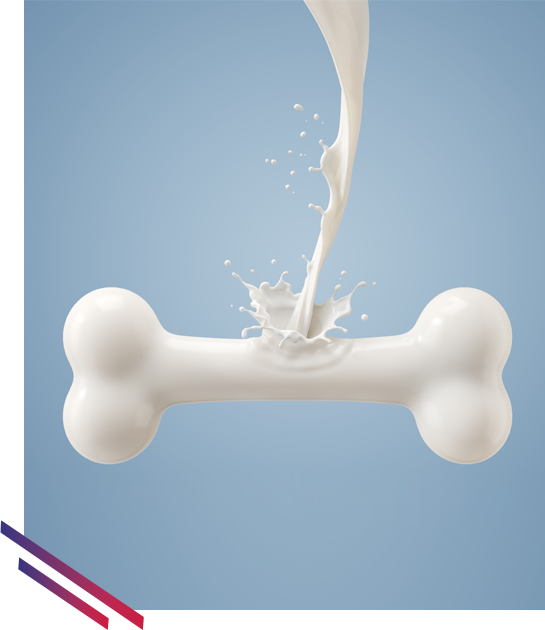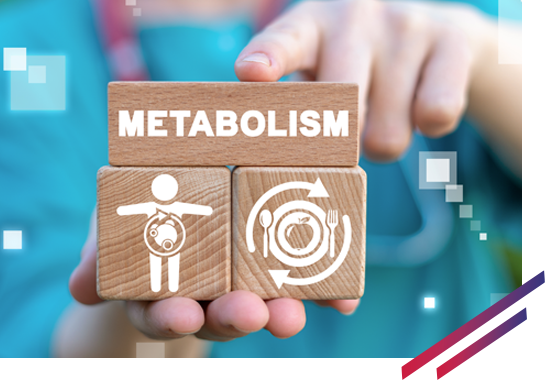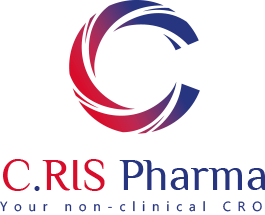AGROFOOD INDUSTRY & EFFICACY MODELS
Our laboratories in Saint-Malo also develop customised models to meet your specific needs.
Anti-hypertensive effect
To test the anti-hypertensive effect of a new ingredient, the evaluation of its inhibitory properties on the Angiotensin-Converting Enzyme (ACE) activity in HUVEC cell line is relevant.
ACE plays a key role in the Renin-Angiotensin system which regulates blood pressure. Indeed, the enzyme is predominantly expressed at the luminal side of endothelial cell membrane where it can metabolize angiotensin I into angiotensin II, a potent vasopressor.
Inhibiting ACE activity is a means to prevent cardiovascular diseases and to potentiate lipolysis within the fat tissue.


Regulation of bone density
The aim of these studies is to evaluate the ability of new dietary supplements to regulate bone density. Assays are conducted on human foetal osteoblast hFOB cell line.
In the initial test, bone resorption or production is assessed in vitro by studying the effect of compounds on osteoblast proliferation and differentiation. Osteoblasts are bone cells which produce bone matrix. Their presence is therefore crucial for bone homeostasis. Many compounds which have estrogenic activities are known to induce osteoblast proliferation and differentiation. This activity is measured through WST-1 assay and cell counts.
In the 2nd test, the effect of the test substance on osteoblast production of OPG and Osteocalcin is investigated. Differentiated osteoblasts secrete several bone remodelling regulatory factors which are directly detectable in biological fluids. For example, osteoblasts can inhibit the osteoclast differentiation by expressing soluble factor called OPG. The osteoclasts are macrophage-derived cells which are responsible for the bone resorption. Furthermore, the osteoblast differentiation and the bone production are associated with secretion of a plasmatic marker called osteocalcin. Hence, it is relevant to measure these two markers, OPG and osteocalcin, to highlight the effect on the regulation of bone density.
An alternative option is in vivo testing. An ovariectomised mouse model is used to represent menopause in women. Ovarian removal triggers an oestrogen-deprived state which causes bone loss, which is assessed by X-ray or histology. Subsequently, the effect of the test substance on bone density regulation can be explored by RMI and by osteocalcin quantification.
Regulation of lipidic metabolism
(in vitro and in vivo)
Both in vitro and in vivo studies are available to analyse the effect of a new product on the regulation of lipid metabolism.
For in vitro, studies are conducted on 3T3 L1 murine cells. One of the particularities of these cells is that they differentiate into adipocytes. After 4 days of incubation with the test substance, adipocytes are counted and compared to positive controls (known for their lipolysis and lipogenesis properties).
Where in vivo experimentation is more appropriate, OB/OB mice or Diet-Induced Obesity mice are feed with the new compound and their body weight is followed. Insulin, glucose and leptin contents are dosed in blood samples.


Antioxidative effect
In order to evaluate the antioxidative effect of a new aliment, the ORAC (Oxygen Radical Absorbance Capacity) method is proposed in our lab. This assay evaluates the ability of a compound to limit the oxidation of fluorescein, a fluorescent probe, caused by an oxidizing reagent resulting in a loss of fluorescent intensity over time. The result is compared to Trolox.
Stress-relief
The stress-relieving effect of a new food complement can be measured by our scientists on Y1 adrenocortical cells or mouse pituitary AtT-20 cells. Cells are cultured with the compound and exposed to a stress. Then, cortisol and corticosterone, stress hormones, are quantified and compared to the control.
Anti-inflammatory
We can test the anti-inflammatory effect of your dietary supplement on human keratinocyte cells irradiated by UV-B exposure. IL-6 secretion, a cytokine which plays a key role in inflammatory response, is quantified in culture supernatants 24h after UV-B treatment by ELISA assay.
